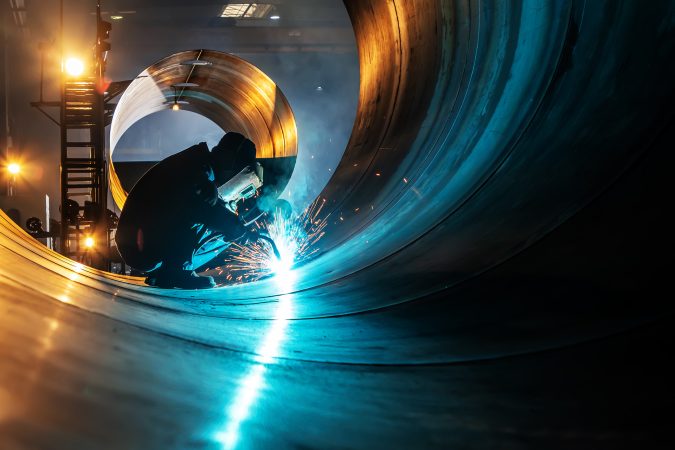


Mindset Extended Reality (XR): Digital Therapeutics for Mental Health
09/10/2024


Enterprise Ireland Funding
17/10/2024Whether it’s enhancing production efficiency, adopting cutting-edge technologies like automation, digital transformation, and AI, or driving sustainability initiatives, research and development (R&D) forms the backbone of innovation in manufacturing. In our latest Tax Talk, Adam Malone, Consultant, R&D Technical, at Ryan, delves into what HMRC is looking for in a manufacturing R&D claim.
Manufacturing is a broad topic that can be difficult to pin down. We have been manufacturing since the Industrial Revolution, though it could be argued that thanks to our developed brains and opposable thumbs, humans have been making things for thousands of years.
HMRC’s R&D tax credits statistics for 2022–23 state that £46.7 billion was spent on R&D in manufacturing, accounting for 24% of all claims, though these figures are problematic, and the true figure is somewhat higher. To determine a company’s industrial sector, HMRC uses the Standard Industrial Classification (SIC) codes on Companies House. These are selected from an official government list, and every business needs to choose at least one (they can have up to four) when they are incorporated.
As HMRC admitted in section 7 of its statistics, a SIC code is not always an accurate reflection of a company’s core business activities. Other sectors include “Agriculture, Forestry, Fishing” and “Water, Sewerage and Waste,” and I have had clients in both sectors that are most definitely manufacturing but are not identified as such in the official figures.
Manufacturing can be defined as obtaining raw materials and transforming them through a series of operational procedures by machine, hand, or chemical and biological processes. I have worked for companies manufacturing power supply units, pneumatic systems, waste-to-energy plants, sheet metal parts, military vehicles, and bomb disposal robots, so you can see the range of products considered to be “manufacturing,” and that’s without considering biotechnology, pharmaceuticals, plastics, or food and drink.
Make UK’s statistics for 2023 show an even bigger rise in R&D claims, with 41% of all claims being from the manufacturing sectors. Some of the contributory factors behind this are the drive for net zero, electrification, and digital transformation. In 2011, the government also established seven High Value Manufacturing Catapult centres with the objective of bridging the gap between academia and industry and facilitating and expediting the scaling-up of new technologies to help grow the UK economy. The fruits of these centres can be seen in the increase in R&D investment and R&D tax relief expenditure.
What Is R&D in Manufacturing?
When looking for qualifying R&D activities, HMRC’s guidelines are the best starting point. There are three key elements to an R&D project for tax purposes: that you are attempting to achieve an advance in overall knowledge or capability in a field of science or technology, that there is significant scientific or technological uncertainty, and that there are competent professionals involved in the project.
To achieve an advance, you can create a new product, material, process, or device, you can make an appreciable improvement to something already existing, or you can duplicate the effects of something but do so in a new or appreciably improved way. HMRC isn’t looking for minor upgrades, tweaks, or something considered to be within the capabilities of a competent professional. It’s looking for something that is disruptive or represents a step change. In theory, if a company released its know-how into the public domain, it would be considered by competitors in their field to be a real “wow” moment or, to use HMRC terminology, to be an advance in overall knowledge or capability.
With new technologies or products, referencing the manufacturing readiness level (MRL) can be a good guide for identifying R&D activity. This scale assesses the maturity of something new and covers the different stages of progress, from proof of concept, development of a prototype, and small-volume production to mass-volume production and the establishment of lean production techniques.
This scale from 1 to 10 covers a huge range of activities, and it is a very different challenge to produce a prototype product or system compared to something that is repeatable, scalable, and cost-effective. I have worked on projects with the objective of taking new technologies from university laboratories into an industrial setting, and I am aware of just how hard this process can be. There is a phrase, “Valley of Death,” that covers MRLs 4 to 6 and refers to this development from the prototype phase. Often, this phase requires major financial investment and is the focus of many funding competitions from the likes of Innovate UK. A major benefit here is that even if your project does win funds from this type of organisation, it can also still attract R&D tax relief.
Other activities to consider for qualifying manufacturing R&D can be process improvements, waste reduction, using new materials, or developing new methods. The key is to remember the basics of HMRC’s criteria, especially the “appreciable improvement” bit that it is looking for.
It is important to know that not every problem will be regarded by HMRC as a scientific or technological uncertainty. If you are resolving issues quickly and relatively easily after a brief discussion, or if you come up with a solution and it works the first time, then these would be viewed as routine problems, or “business-as-usual” activities, and within the capabilities of a competent professional. If something has taken several iterative attempts to resolve and the outcome of each is uncertain for the competent professionals, then it is likely that this would be qualifying activity.
One thing is certain: R&D tax relief is a complex subject, whatever the sector, and it is vital that a company seeks expert advice to establish whether its project meets the criteria set out by HMRC.
Am I Eligible for Innovation Funding?
Evaluate your eligibility, receive tailored advice, and transform your business.
Discover your funding potential with our free innovation funding assessment tool.

